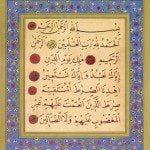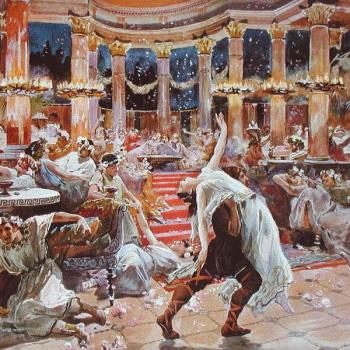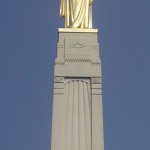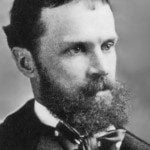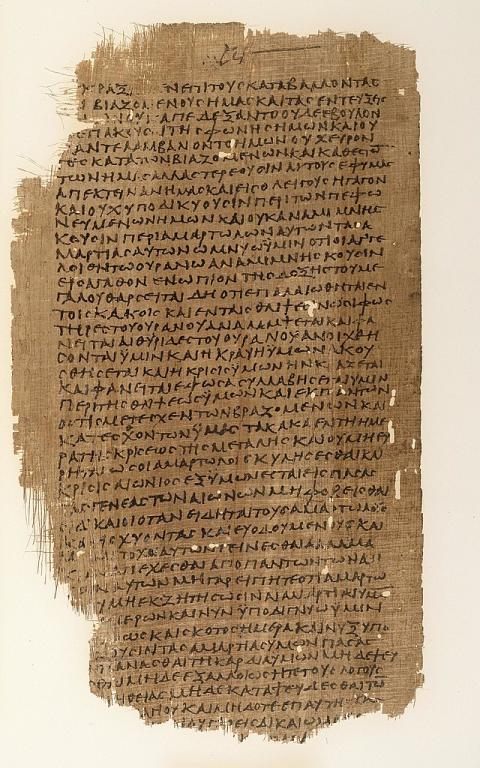
(Wikimedia Commons public domain image)
***
This interesting reminiscence was just published in Interpreter: A Journal of Latter-day Saint Faith and Scholarship:
Gordon C. Thomasson, “Matthew Black and Mircea Eliade Meet Hugh Nibley”
Abstract: As a graduate student, Gordon Thomasson had the opportunity to introduce two internationally renowned scholars to the publications and scholarship of Hugh Nibley: Matthew Black, an eminent scholar of ancient Enoch writings; and Mircea Eliade, famed chair of the History of Religions program at the University of Chicago. Upon hearing of Nibley’s Enoch discoveries, Black made an immediate, impromptu visit to BYU to meet him. Upon reading one of Nibley’s studies, Eliade proposed hiring him on the spot, exclaiming, “He knows my field better than I do, and his translations are elegant!”
[Editor’s Note: Part of our book chapter reprint series, this article is reprinted here as a service to the Latter-day Saint community. Original pagination and page numbers have necessarily changed, otherwise the reprint has the same content as the original.
See Gordon C. Thomasson, “Matthew Black and Mircea Eliade Meet Hugh Nibley,” in Hugh Nibley Observed, ed. Jeffrey M. Bradshaw, Shirley S. Ricks, and Stephen T. Whitlock” (Orem, UT: The Interpreter Foundation; Salt Lake City: Eborn Books, 2021), 423–432. Further information at https://interpreterfoundation.org/books/hugh-nibley-observed/.]
***
And, as an added bonus, here are links to — reminders of — several articles that were published previously in Interpreter:
Daniel C. Peterson, “The Small Voice”
Abstract: Revelation comes in various forms, some of them spectacular and some of them extremely subtle. The scriptures and the history of the Restoration offer numerous examples across the entire spectrum. Whatever its form, however, divine revelation remains divine revelation, and it is the avowed mission of the Interpreter Foundation to thoughtfully ponder such revelation, to try to explicate its meaning, and to illustrate its richness. In turn, such examination can itself provide an opportunity for personal revelation—both for the examiners and, we hope, for those who read or hear the results of their work.
Ugo A. Perego, “The Changing Forms of the Latter-day Saint Sacrament”
Abstract: Partaking of bread and water each Sunday is a fundamental part of the theology of the Church of Jesus Christ of Latter-day Saints — a solemn moment in which the mortal Savior’s mission and ministry are remembered and pondered by those who partake individually and as a congregation. This paper explores instructions provided by the Savior himself as found in the Mormon canon of scriptures, together with a review of how this practice has changed over time as part of the LDS Church liturgy. Moreover, the meaning associated with this sacred ordinance is analyzed by way of the Savior’s teachings in ancient scripture through Mormon prophets in modern times, particularly in light of a more recent emphasis shared by the LDS Church leadership.
Abstract: The Book of Abraham has attracted a great deal of scholarly attention since some of the papyri once owned by Joseph Smith were rediscovered. A focus of this attention has been the source of the Book of Abraham, with some contending that the extant fragments are the source, while others have argued that the source is either other papyri or something else altogether. New investigations suggest that, while the relationship between papyri and text is not clear, it is clear that the fragments are not the source and that the method of translation was not the Kirtland Egyptian Papers. Additionally, further investigations into the source of the Book of Abraham as well as the interpretations of the facsimiles have made it clear that much of the controversy about the Book of Abraham has been based on untested assumptions. Book of Abraham studies have made significant strides forward in the last few decades, while some avenues of research are in need of further pursuit.
Matthew L. Bowen, ““Creator of the First Day”: The Glossing of Lord of Sabaoth in D&C 95:7”
Abstract: The calqued name-title “Lord of Sabaoth,” echoing James 5:4, occurs four times in the Doctrine and Covenants in revelations given to the prophet Joseph Smith from December 25, 1832 to August 6, 1833. Of these occurrences, only D&C 95:7 offers a gloss or interpretation for the name “the Lord of Sabaoth,” which is, by interpretation, “the creator of the first day, the beginning and the end.” Upon close inspection, this explanation makes excellent sense from an ancient Israelite etiological as well as (perhaps) an etymological standpoint. Past criticisms of the gloss in D&C 95:7 have focused on the wrongly assumed incongruity of “first day” and “Sabaoth” (“hosts”), and have neglected function of the divine name Yhwh in titles, most often represented in scripture by the term “Lord,” as in the calqued name-title Lord of Hosts. Understanding the connection between Yhwh (the form of which suggests the meaning “He creates,” “He brings into existence,” “he brings to pass”), the divine council (the “hosts”), creation (on “the first day” or “Day One”), and the underlying grammatical meaning of “Lord of Hosts” = Yhwh ṣĕbāʾôt (i.e., “He creates the [heavenly] hosts” or “He brings to pass the [heavenly] hosts”) is crucial to understanding the calque “Lord of Sabaoth” and the explanation given in D&C 95:7. When considered in its entirety, this revealed gloss is right on target. The creation/begetting of the heavenly hosts was associated with “the first day” or “Day One” in ancient Israelite thought. They are described as “finished” or fully prepared by the end of the six creative periods (“days” in Genesis 2:1). Additionally, “Lord of Sabaoth” or Yhwh ṣĕbāʾôt is to be understood in connection with the similarly constructed name-title Yhwh ʾĕlōhîm (“He creates gods,” “he causes gods to be,” or “he brings to pass gods”). The meristic appositive title “the beginning and the end” implies that Yhwh is not only the “author”/“creator” of Israel and its salvation but the “finisher” thereof. Far from evidence of Joseph Smith’s lack of knowledge of Hebrew, the interpretive gloss in D&C 95:7 constitutes evidence of Joseph’s ability to obtain correct translations and interpretations through revelation.
Dennis Newton, “Nephi’s Use of Inverted Parallels”
Abstract: Did Nephi intentionally use chiasmus in his writings? An analysis of fifteen multi-level chiasm candidates in Nephi’s writings demonstrates a high statistical probability (99%+) that the poetic form was used intentionally by Nephi but only during two specific writing periods. This finding is buttressed by further analysis, which reveals a clear and unexpected literary pattern for which Nephi seems to have reserved his usage of chiasmus. The nature of obedience is a major theme in Nephi’s writings, and he regularly employed chiasms to explore the topic early in his writings. After a period during which he discontinued use of the technique, he returned to the poetic device toward the end of his life to signal a significant shift in his thoughts on the topic of obedience.
Duane Boyce, “Reclaiming Jacob”
Abstract. A chapter of Adam Miller’s Future Mormon concerns Jacob’s encounter with Sherem in Jacob 7. While novel, Miller’s treatment of Jacob and Sherem appears inadequate. He overlooks features of the text that seem to subvert his unconventional conclusions about them. This essay identifies a number of such matters, falling in four major categories, and shares thoughts on the need for perspective when discussing Jacob’s conduct — or the conduct of any prophet, for that matter. It also highlights the jeopardy we face of being the second group to fall for Sherem’s lies.
Posted from Kihei, Maui, Hawaii



